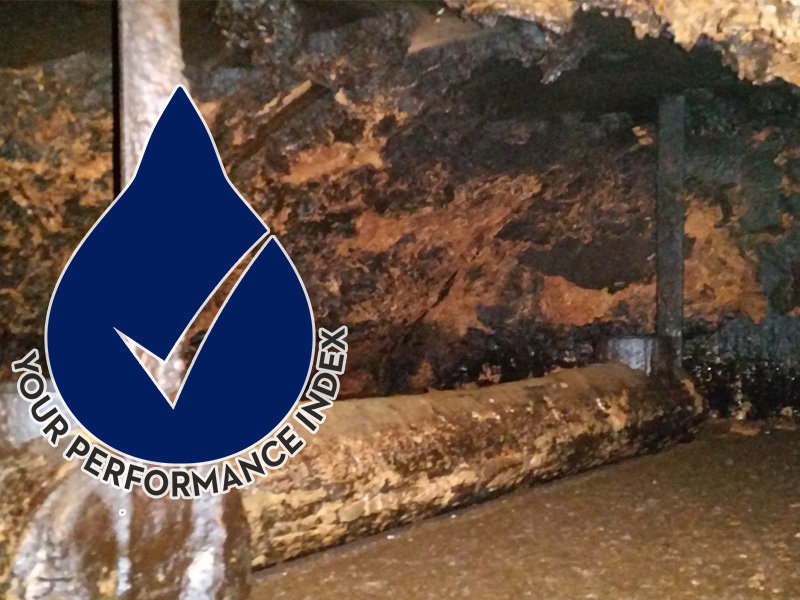Internal filter inspection is an essential part of any scheduled maintenance routine. The external view of your filters is not always an accurate representation of what is happening within. Consistent internal inspections will keep your plant running optimally and provide early detection of issues, that when resolved quickly can prevent the need for larger, more expensive repairs. Below you will find a list of internals and components we recommend inspecting on a regular basis.
When looking inside your filter, take care to inspect your media. The filter media should be level, as the presence of mounds or craters may be an indication of media loss. Also scan your media height, a large reduction of height may also be an indicator that you are losing media. Look for debris and mudballs on top of the media. The presence of debris or mudball buildup may be due to inadequate backwash or a sign that you may need additional protection upstream of your filter, such as a strainer or other screen device. Search for any gravels in view. If you see gravels in view, this may be a sign of an upset support gravel bed and will result in media loss. Upset gravel beds can occur when you have an unusual pressure event, upsetting the support gravel layer and providing a path for media to escape. We recommend taking a core sample of the media to look for mudballs and proper stratification, as the top layer of media is not always the most accurate representation of what is happening inside of your filter. The presence of channeling and/or mudballs are a symptom of a backwash issue, poor distribution, possible internals break, or a sign that your media needs to be replaced.
It is also important to check your distributor or backwash collector. You want to ensure that your trough is level and there is no build-up or corrosion present. Corrosion buildup can prevent your system from performing optimally or eventually lead to plant shutdown.
When inspecting your air scour grids, confirm your grid is buried in media to promote even distribution. Examine the air pattern by draining down the water and running the blower to check for even distribution.
Next review your hardware, including nuts, bolts, clamps and supports. Test tightness and inspect for corrosion or missing parts. Fixing these minor repairs can save on costly repairs in the future.
Lastly, look at your underdrain if you are able. If you have a false bottom underdrain, you may have the ability to inspect the underdrain system from underneath if a manway is present. You want to check for corrosion and broken or missing nozzles that need to be replaced. If your underdrain is not accessible, some signs of underdrain failure include mounds or craters in your media, media in your clearwell or distribution system or abnormal differential pressure.
To learn more about internal filter maintenance or have any questions about your system contact us today!
U.S. Water’s Performance Index series is designed to share operations and maintenance best practices with plant personnel. The more our customers know about how to maintain and protect their systems, the more they can safeguard against system failures or efficiency issues.

